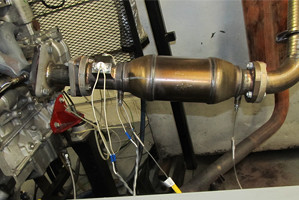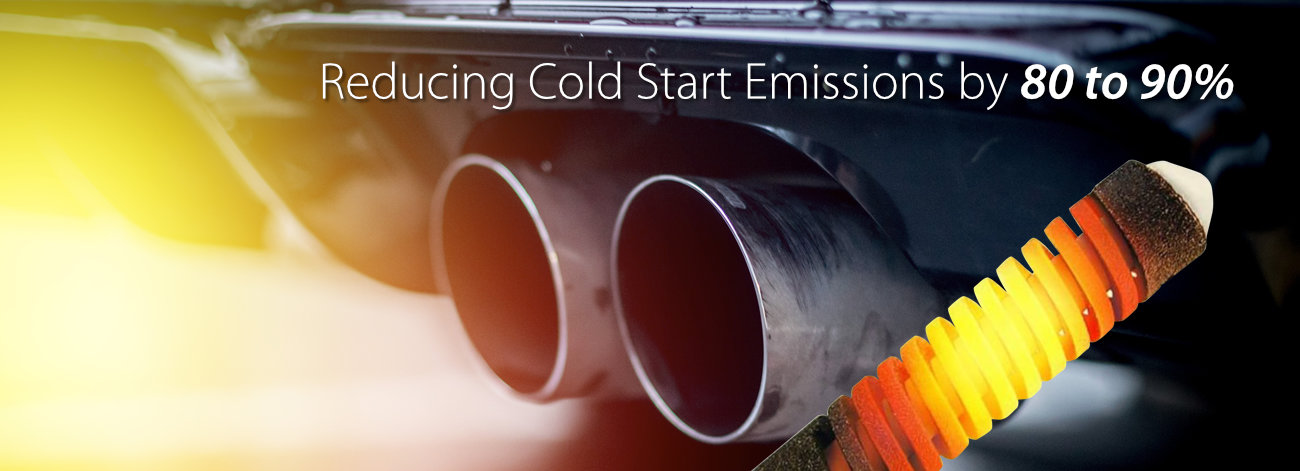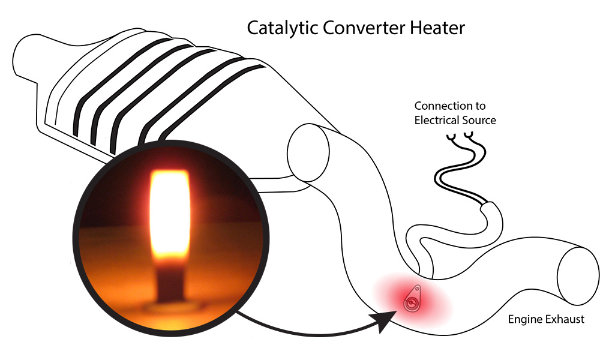Emissions Reduction by 80 to 90% – Using 21st Century Technology
How It Works
The shortfalls of the catalytic converter have been known since its inception. A catalytic converter reduces an engine’s toxic pollution only when the exhaust is hot enough to permit the full functioning of the converter. A fully functioning catalytic converter provides an almost complete reduction of a vehicle’s exhaust including nitrogen oxides, carbon monoxide and hydrocarbons. These exhaust elements become less hazardous emissions such as carbon dioxide, water vapor and nitrogen gas.
This shortfall is corrected by Vaness Heating LLC’s 21st Century heating elements. The product will heat the initial cold startup exhaust warming it before it reaches the catalytic converter. Thereby reducing the toxic emissions emanating from the cold start of an internal combustion engine.
The result would allow ICE powered vehicles to be less pollutive than electric vehicles. As over 60% of this country’s electricity is produced by the burning of fossil fuels, we believe with further refinement this product could create the first zero toxic emissions ICE powered vehicles.
This product uses a system of patented layered ceramic heating elements producing the following results and benefits:

- Heats quickly – (500°F in 7 seconds)
- Draws low power – 15 amps for 1 second, 1 amp thereafter
- Low production cost
- Consumer retail price is $500 to $1,000. High demand for low emission vehicles
- Could be mandated by the US Government
These units can also reduce emissions of diesel and aircraft jet engines.
These units are currently in production at facilities in Maryville, Tennessee, China and Cleveland, Ohio. The engineering team, including electrical and mechanical engineers is based in Cleveland, Ohio.
Vehicle Cabin Heating
Warming in Seconds
7 seconds or less
Begin to warm the interior of your vehicle in less than 7 seconds, regardless of the temperature outside. This feature can begin with the initial power to the vehicle such as unlocking or opening the door. The need to have warm heat coming out on a cold day can be understood by anyone who has started a vehicle on a cold day.






